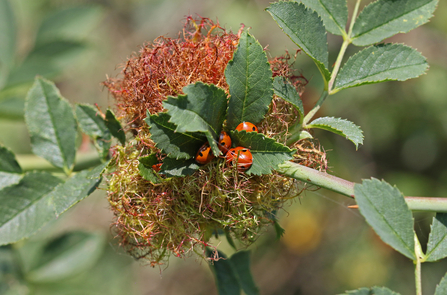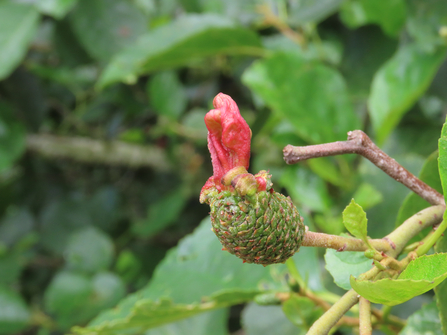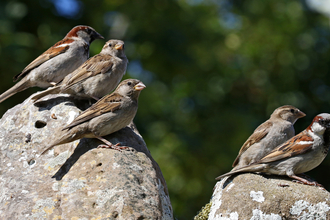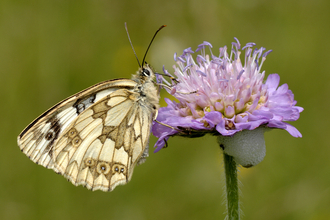Have you ever seen a growth on a plant stem or leaf and wondered what might have caused it? I was very little when I discovered that some of these growths had 'maggots' living in them and it took me ages before I'd sit under a tree again; I was terrified of a leaf landing on my head and a maggot escaping into my hair. Thankfully, this worry didn't last too long and now i find myself quite fascinated by the miniature worlds that happen in a gall.
Galls are abnormal growth forms that are caused by an organism other than the host plant. This organism triggers the plant to react to its presence, enlarging or proliferating its cells or tissues to provide protection and nutrition for the gall causer. Some galls can provide homes for several species other than the original gall-causer - some of these parasitise the gall-causer and some eat the gall tissue, others move in once the gall is empty and use it for food and shelter then.












